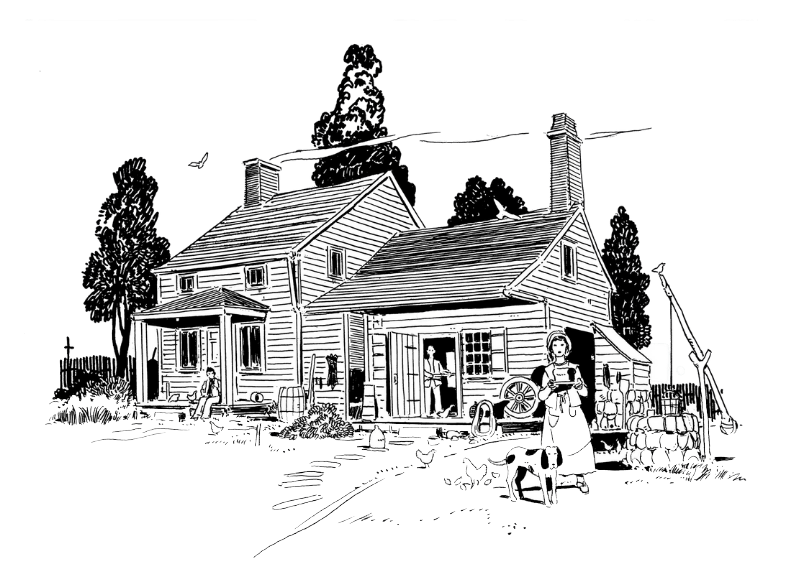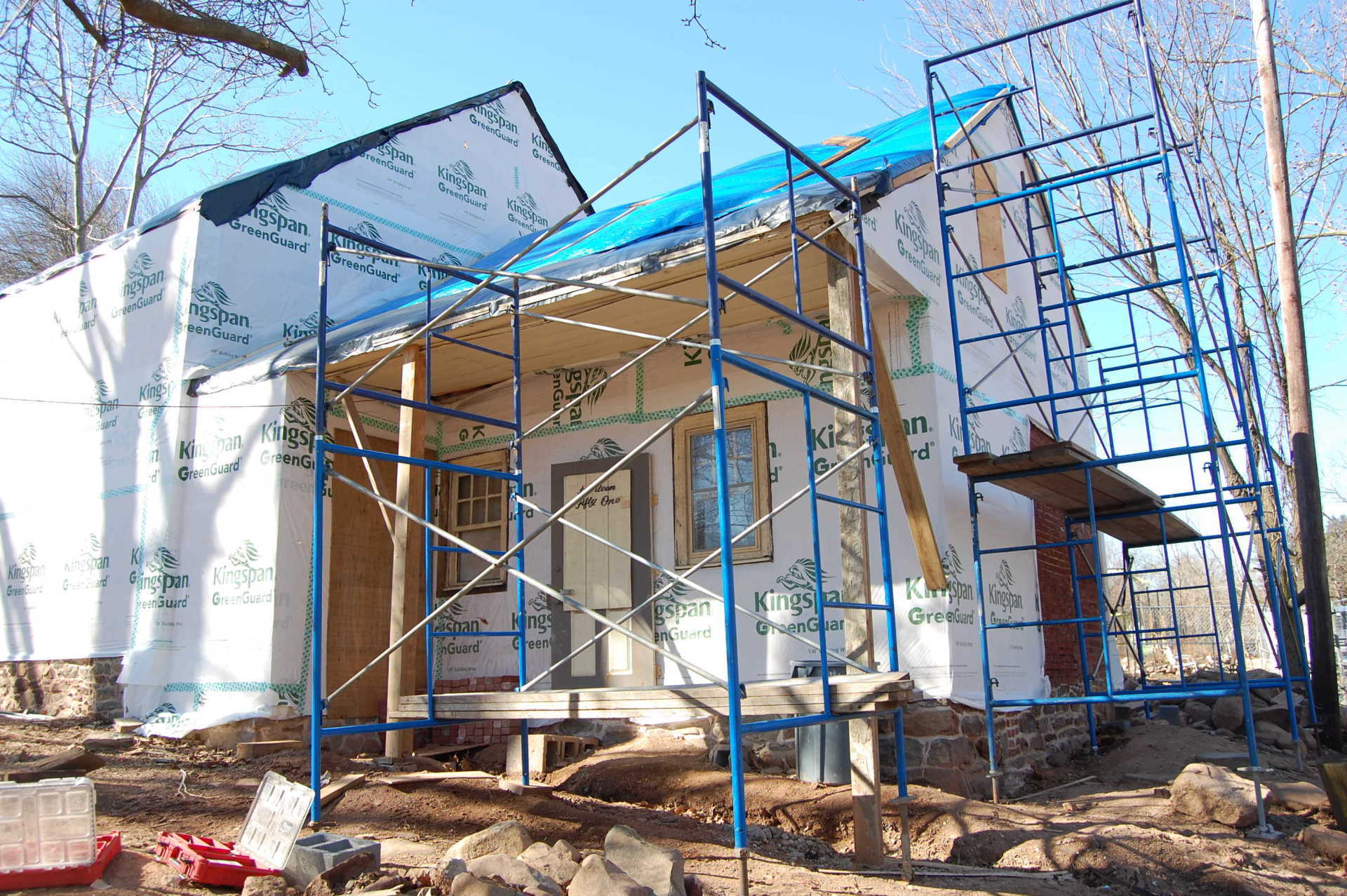Frazee House Historic Designation
“Sir, I give you this bread through fear, not in love." - Aunt Betty
The Frazee House, a nationally designated historic site, is significant for one woman’s rumored role in the American Revolution, and as an excellent example of 18th-century vernacular residential architecture. The house is reported to have been constructed circa 1720-1740 by the husband of Elizabeth (Betty) Frazee.
As the legend holds, after the Battle of Short Hills, General Cornwallis and his troops passed by the house while marching toward the Watchung mountains, located a few miles to the north. Known to the locals as a prolific baker, Aunt Betty was baking bread at the time. Hungry and tired, the troops smelled the bread and Cornwallis approached her stating, "I want the first loaf of bread that next comes from that oven." Betty is said to have replied, “Sir, I give you this bread through fear, not in love.” Evidently impressed by her courage, Cornwallis is said to have stated, “Not a man in my command shall touch a single loaf.”
While history offers evidence that Betty lived in the house and did, indeed, bake bread, the story of the actual conversation is not authenticated by primary source documents. The words allegedly spoken by the principals are found in the earliest authoritative source on the subject, F.W. Ricord's History of Union County, page 513. This is one of the sources cited in the National Register of Historic Places filing , which led to the Frazee House being placed on the Register.
The Frazee House has received official recognition on:
Modern Use of the House
The most modern use of the house was as the home of the operators of a small zoo that operated on the six-acre property from the 1970s through 1996, since which time the house has been vacant. Except for an unfortunate, but reversible, enclosed porch constructed in the late 1980s shortly before the creation of the local historic preservation commission, the building retains a high level of integrity. But it is unheated, and water is leaking into the basement.
The house was acquired by the Township of Scotch Plains in 1998 via eminent domain for the creation of a park, including possible restoration of the house as a community meeting facility. The Fanwood-Scotch Plains Rotary club acquired control of the house itself and one acre surrounding it in 2004.
In 2014 the Scotch Plains Township Council appropriated money to continue remediation of the former zoo property, though the decision to float a bond for capitalization of that and other projects in the Township became bogged down in the Council.
Today, it stands as a reminder of the need to protect historic resources on publicly-owned open space.
Detailed History
Gershom and Elizabeth Frazee
Circa 1760-1817
The Frazee House in Scotch Plains is an Anglo-Dutch style colonial home. It was very likely built by the 18th century carpenter and joiner, Gershom Frazee who bought 14 acres of land on Raritan Road in 1760 adjacent to John DeCamp from one Jeremiah Pangborn. In 1761, Frazee bought another adjoining property at Ash Swamp from one Jacob Winans, also a carpenter, in the 1750s. Winans or Winants was a Dutch family from the Staten Island vicinity.
Frazee Lee Family
Circa 1817-1893
Gershom and Aunt Betty's grand nephews owned and operated the property for over sixty years. Gershom Lee married Sarah Hetfield and continued to live on the family farm. Gershom and Sarah had two sons, Daniel H. Lee and Matthias Frazee Lee, generally known as Frazee Lee. Gershom Lee died intestate in 1845 and the Essex County Surrogate Court granted the estate to his sons that year.
Ryno Family
1893-1949
The Frazee House was purchased at public auction by Albert Ryno in 1893 for the sum of $675.00. His family farmed the land until 1949 when his sons sold the property to Franklyn Tuttle Terry and Ella Louise Terry of South Plainfield. It appears the Rynos made few changes with the exception of possibly replacing some of the older Frazee buildings with the garage seen in the 1940s photos.
Terry Family
Circa 1950-1995
The Terry Family was famous for its Terry-Lou Acres Zoo, New Jersey's largest privately owned zoo. The Terrys lived in the house and operated the TerryLou Zoo on the property until 1994 when they sold the property and zoo to Harold and Deborah Kafka.
Kafka Family
1995-2005
The Kafkas operated the establishment as the Scotch Plains Zoo until 1997. The property passed through two owners in 1997 and 1998. The property was taken under eminent domain by the Township of Scotch Plains in 1998 and remained in arbitration until 2000.









